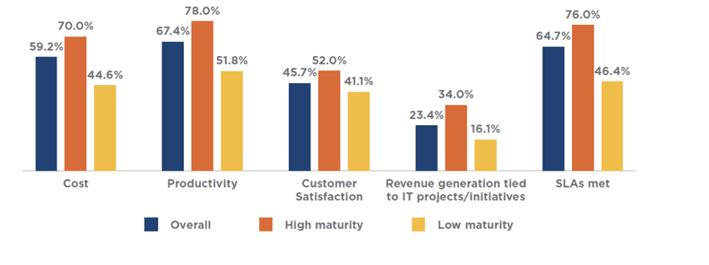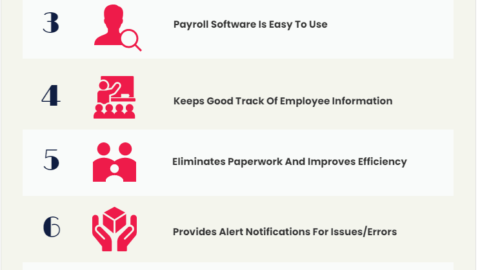What is Business Service Management (BSM)?
Business Service Management (BSM) is a new methodology that is implemented by Information Technology enterprises to evaluate the operational and management services. With the help of BMS, IT companies can align vital business services with its infrastructures for providing the best services as per the ITIL, i.e., Information Technology Infrastructure Library. In this article, we will talk about the benefits of Business Service Management methodology and share best practices.
Table of Contents
Overview
In the early 1990s, the British Office of Government Commerce released the first ITIL (Information Technology Infrastructure Library). The library became popular in the mid-1990s as more companies started implementing it for improving their business services.
The ITIL was initially published to align IT with its business processes. The primary focus was to enhance IT management by using a more precise model of control.
With time, the ITIL was updated, and from the third version, it started focusing on improving the quality of service of the organizations, instead of directly managing and monitoring IT infrastructure.
The third version of ITIL consisted of five major components:
- Service Strategy – guidelines, strategies, and standards that help in implementing business service management processes.
- Service design – guidelines for creating strategies that monitor the improvements at the same time maintain the business value.
- Service Transition – guidelines to improve new business services and operations.
- Service operations – helps in achieving efficiency and provides services for maintaining the value of clients.
- Continuous service improvements – creating and monitoring the value of clients and customers through better applications and service.
BSM helps the IT companies to implement the ITIL framework, to achieve the goals which are related to the IT components that support them.
Implementing any IT operations management software products improves the IT services and also reduces the overall cost provided the enterprise.
The Structure of Business Service Management (BSM)

The structure of Business Service Management
Image Source – TADVISER
Implementation of Business Service Management methodology (BMS) can be broken down into four major steps:
- Identifying the business requirements and processes for Information Technology services.
- Mapping out the whole processes of IT services including storage systems, network components, applications, and others.
- Monitoring the necessary IT elements for improving the business process further.
- Authorizing every Information Technology program to allocate the resources.
The Benefits of Business Service Management (BSM)
Business Service Management (BSM) has a wide range of benefits for a particular organization. Here is the list of a few benefits of using BSM:
- The decrease in operational cost and improved efficiency
With the help of business service management and automation, the additional manual works can be removed efficiently to increases the overall efficiency of businesses.
- Reduction in workloads and efficiency in self-service
Self-help is important for employees to get solutions easily and quickly. If the employees can solve their issues themselves, then it automatically reduces the workload significantly. The automated delivery services further reduce the stress of the service desk agents.
- A Better Return on Investment
The more people and organizations start using BSM solutions, the better return on investment and ongoing management costs.
- Improved Effectiveness
Using a BSM solution helps in ensuring that the request of employees are dealt very quickly and agreed on all service levels. There would be no more delays in solving any issue due to the inefficiency of individuals.
- Improved Performance
With the help of BSM, businesses can understand which tasks have been completed and which are left. It provides insights for enhancing the performance of companies further so that it would be easier to communicate between clients and business stakeholders.
- Better customer service experience

Business Service Management – Which of these does your IT Organization Measure ?
Image Source – ITSM.tools
BSM helps in improving the overall customer service experience by providing a better self-service, request catalogs, social capabilities, and customer-centric support.
- Opportunity for improvement
The increased visibility of operational performance allows better opportunities to be identified. The ITIL capabilities of continuous service improvement provide a better mechanism for management.
- More effective communication
Business service management and ITIL solutions provide active communication channels including, mobile, email, messaging, broadcast through a self-service portal. Its alerting capabilities also ensure that no query goes unactioned.
- Improved accountability
Business service management not only helps in assigning the tasks efficiently but also improves accountability across all business functions. For example, onboarding new employees need multiple business functions to work together for delivering on time.
- A Better understanding of the services
Business service management is not limited to support management. It also helps in managing and understanding other business functions including service operation, and strategy.
- Standardization
Standardization is a common service model for employees which offers the potential to provide single service point irrespective of the service provider.
- Improved collaboration across all business functions
Not only business service management makes it easy to transfer work among individuals or groups, but it also makes it more comfortable to pass the work among different business functions.
Business Service Management (BSM) Best Practices
Business service management is a vital part of any IT department. It does not matter which ITIL framework a business employs; it’s essential to follow all the best practices for keeping the IT efficient.
If you want to know about the different ITIL services life cycle, what processes are involved and how life cycle stages are linked then take up an ITIL Training Course, which will help you in enhancing the overall quality of IT service management.
Here are the 6 Business Management best practices you need to follow:
- Don’t align but integrate
Most of the BSM framework focus to integrate IT into a business entirely. The IT department is not isolated but works with other departments for meeting the goals.
However, merely integrating IT with business needs will not give you any results. IT should be made the integral part of any business which will help in achieving the goals not just in the IT department but in almost every level.
- Be proactive and not reactive.
Previously, IT was more focused on reacting to the problems and issues as they came up. In today’s world, this approach will not work, and organizations should be able to anticipate any matter before it arises.
Similarly in the IT department, instead of waiting for the system to be overload and crash, frameworks like BSM regularly recommend for system improvement.
- Think Holistically
Most of the IT services focus on the whole idea instead of working in each department. All the departments of a business need to function together to run it smoothly.
Holistic thinking should be applied to designing the services. Business management services monitor and improve design services continuously.
- Use Structured Workflows
One of the essential features of business service management frameworks is that they recommend the use of structure workflow.
Employing standard workflows is a must for creating a common point between individuals and IT departments. It also increases accountability as everyone uses the same methods.
- Keep Important Data and Information Safe
BSM frameworks stress on the need for keeping your data and information safe. It consists of everything from unique IDs and passwords to limiting the access where you have stored the data.
- Always keep improving
Continuous improvement is the most critical business service management practice you need to follow. Most of the frameworks recommend that using BSM should result in continuously monitored systems.
Conclusion
Businesses are dynamic in nature, and it changes continuously; therefore, IT management cannot be just set and forget. As the enterprises are looking for ways to improve the way they do business, IT should search for more cost-effective solutions.
Even if you think that the current technology is the best one, there might be something better waiting to be implemented tomorrow.
Businesses outgrow the old processes all the time, and business service management knows that the technology departments are not any different. In this article, we talked about the benefits of Business Service Management methodology and shared best practices.
This article is written by our guest blogger “Danish Wadhwa”.
See Also
Production Planning and Control System
Project Management Methodologies











Good post
Awesome thank you! (: